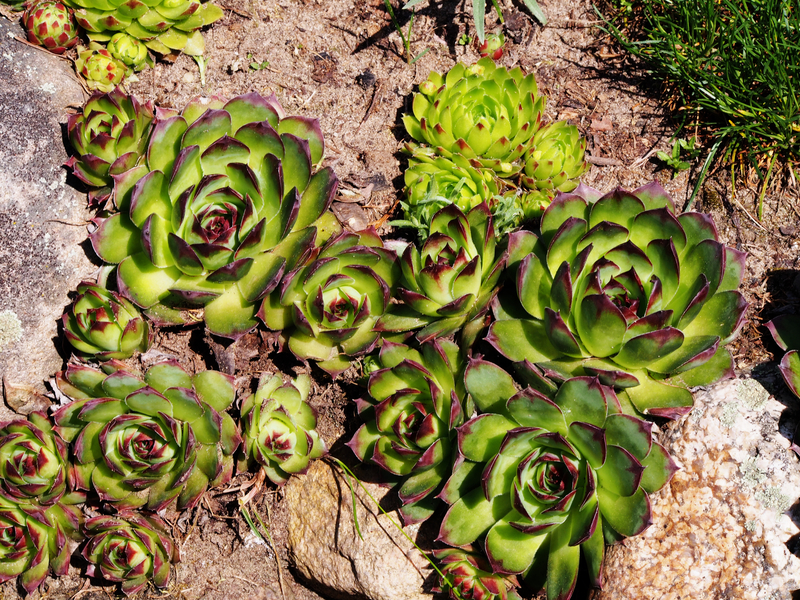Change Your Garden's Location Easily with These 3 Smart Strategies
Are you feeling dissatisfied with your current garden spot? Maybe your plants aren't thriving, or perhaps you simply want to enjoy your lush flowers and tasty vegetables from a new view. Whether you're looking to relocate your garden effortlessly or searching for advice on how to change your garden's location easily, you're in the right place. In this comprehensive guide, we'll cover three smart strategies that make switching your garden's site simpler, more efficient, and more successful. By following these expert-backed methods, you'll ensure your plants continue to flourish--no matter where you move them!
Why Relocate Your Garden?
Gardeners often wonder if moving their garden is worth the effort. Let's take a look at some of the most common reasons why you might consider moving your garden to a better location:
- Improved sunlight: If your current spot receives poor sunlight or is shaded by new constructions or trees, plants may not thrive as well.
- Better soil quality: Over time, soil nutrients can diminish. New locations may offer fresher, richer soil for better plant health.
- Convenience: Maybe your current garden is too far from your home, making watering and harvesting less enjoyable.
- Pest and disease management: Some pests and diseases linger in the soil. Moving your plot can give your plants a fresh start.
- Aesthetic appeal: Changing the garden's locale may enhance your landscape's look and feel, adding to your outdoor enjoyment.
Whatever your reason, changing your garden's position doesn't have to be complicated. Read on for three smart, effective strategies!

Strategy 1: Plan and Prep for a Smooth Garden Relocation
Assess Your New Garden Spot Carefully
Before even touching your plants, take time to analyze potential new locations. Here's how you can ensure you're picking the best possible spot:
- Check sunlight exposure: Most vegetables and flowers need 6-8 hours of sunlight daily. Observe the site at different times to gauge sun movement and shade patterns.
- Evaluate drainage: Avoid areas where water pools after rain. Well-drained soil is crucial for healthy roots.
- Test the soil: Use a soil test kit to assess pH and nutrient levels. This will help you amend the soil preemptively for optimal plant health.
- Consider convenience: Proximity to a water source, accessibility for tools, and ease of access matter.
- Look for hazards: Make sure there are no underground cables, pipes, or tree roots.
Prepare the New Site in Advance
One of the most efficient ways to make moving your garden seamless is by prepping the new area well ahead of the big move:
- Clear debris, grass, and weeds: Give roots a clean start by removing any obstacles.
- Amend the soil: Mix in compost, organic matter, and necessary fertilizers based on your soil test.
- Outline garden beds: Mark garden layouts using string or stakes. This provides structure and helps visualize your new garden.
- Mulch after planting: Plan to cover beds with organic mulch after transferring plants to retain moisture and suppress weeds.
Taking time to plan and prepare gives your relocated garden the best start and helps eliminate unnecessary stress for both you and your plants!
Strategy 2: Carefully Transfer Plants for Maximum Survival
Timing Is Everything
To change your garden's location easily, pay attention to the right time for transplantation:
- Ideal seasons: Early spring or late fall are best, as most plants are dormant and less likely to experience transplant shock.
- Overcast days: Choose cloudy, cool days to minimize heat stress and immediate sun exposure on roots.
Steps to Transplant Like a Pro
- Water thoroughly: One to two days before moving, water the plants deeply. Moist soil makes digging easier and keeps roots hydrated.
- Dig gently: With a sharp spade or fork, dig widely around the plant to preserve as much of the root ball as possible. Lift the plant carefully, disturbing the roots as little as possible.
- Protect the roots: If there's a delay before replanting, wrap roots in moist burlap or wet newspaper to keep them damp.
- Replant promptly: Set each plant in its new garden hole at the same depth it was growing before.
- Water well: After planting, water immediately and thoroughly. This settles the soil and removes air pockets.
- Mulch and shade: Add mulch and, if necessary, provide temporary shade with fabric or cardboard to help the plants adjust.
Tip: Delicate or slow-growing plants, such as perennials or shrubs, may benefit from trimming before transplanting to reduce stress and avoid shock.
What About Raised Beds or Containers?
If you garden in raised beds or containers, moving your garden is often even easier! Raised beds can sometimes be disassembled and strategically relocated, while container gardens can be moved directly.
- For raised beds: Empty at least half of the soil, lift and move the frame, reposition, and refill the soil (amending as needed).
- For container gardens: Simply carry or wheel your pots to the new location. Make sure your new site has the appropriate drainage and sunlight.
Strategy 3: Transition and Adapt--Ensuring Your Plants Thrive in Their New Home
Monitor and Adjust After the Move
The hard work may be done, but after a garden relocation, your attention is still essential for a successful transition. Here's what to keep in mind:
- Monitor moisture: Newly transplanted gardens dry out faster. Check soil regularly and water when the top inch feels dry.
- Watch for stress: Wilted leaves, yellowing, or slower growth are signs of transplant shock. Shade or mist plants if they seem stressed.
- Fertilize sparingly: Go light on fertilizer for the first few weeks, as too much can burn the roots and hinder recovery.
Help Your Plants Acclimate
If your new location offers different light, wind, or drainage, your plants may need time to adapt. Help them adjust by:
- Easing them into full sun: Use shade cloth or temporary covers for a few days, especially for plants accustomed to more shade.
- Supporting taller plants: Stake or cage as needed to prevent wind damage.
- Mulching: Maintain consistent soil moisture and temperature.
Long-Term Success: Building Healthy Soil
Healthy plants start with healthy soil. After relocating, focus on building fertile, living soil in your new garden spot:
- Compost regularly: Add organic matter year-round to promote beneficial microbes and retain moisture.
- Rotate crops: Change the type and location of crops each season to prevent soil-borne diseases and nutrient depletion.
- Avoid compacting soil: Stay off wet soil and use mulch paths to preserve structure and aeration.
Pro Tip: Introducing earthworms and companion planting can further enrich your new garden site, making it more resistant to pests and disease!

Frequently Asked Questions about Changing Your Garden's Location
Can you move a garden in the middle of the growing season?
It's best to move gardens during the dormant periods--spring or fall--but if you must relocate during the growing season, choose the coolest, cloudiest days and water plants deeply both before and after the move. Be ready to provide extra shade and monitor for stress more frequently.
How do you prepare plants for garden relocation?
Properly hydrate, trim large foliage (for perennials and shrubs), and avoid disturbing the root ball. Try to keep as much native soil around the roots as possible and replant promptly at the same depth.
Is it possible to move a mature garden bed?
Yes, but it will require more work. Take care to dig wide around established plants, enlist help for heavy lifting, and amend your new bed for a smooth transition. Divide overly large perennials for better success.
Will moving my garden harm my plants?
While any move creates some stress, with careful planning, proper preparation, and post-relocation care, your plants can recover quickly and go on to thrive--even better than before!
Conclusion: Change Your Garden's Location Easily with Smart Planning
Whether you're seeking more sun, better soil, or just a more attractive view, it's easy to change your garden's location using these three proven techniques: careful planning, gentle plant relocation, and supportive aftercare. By following these strategies, your garden will adapt and flourish--perhaps even better than before!
- Plan carefully and choose the right new spot
- Relocate plants with care
- Support and monitor your garden after the move
With these steps, you'll be able to move your garden easily, efficiently, and stress-free, ensuring a beautiful and productive outdoor space for years to come. Ready for a fresh start? Try these smart strategies and watch your relocated garden thrive!
For more tips and inspiring ideas on garden relocation, stay tuned to our site and join our thriving garden community!